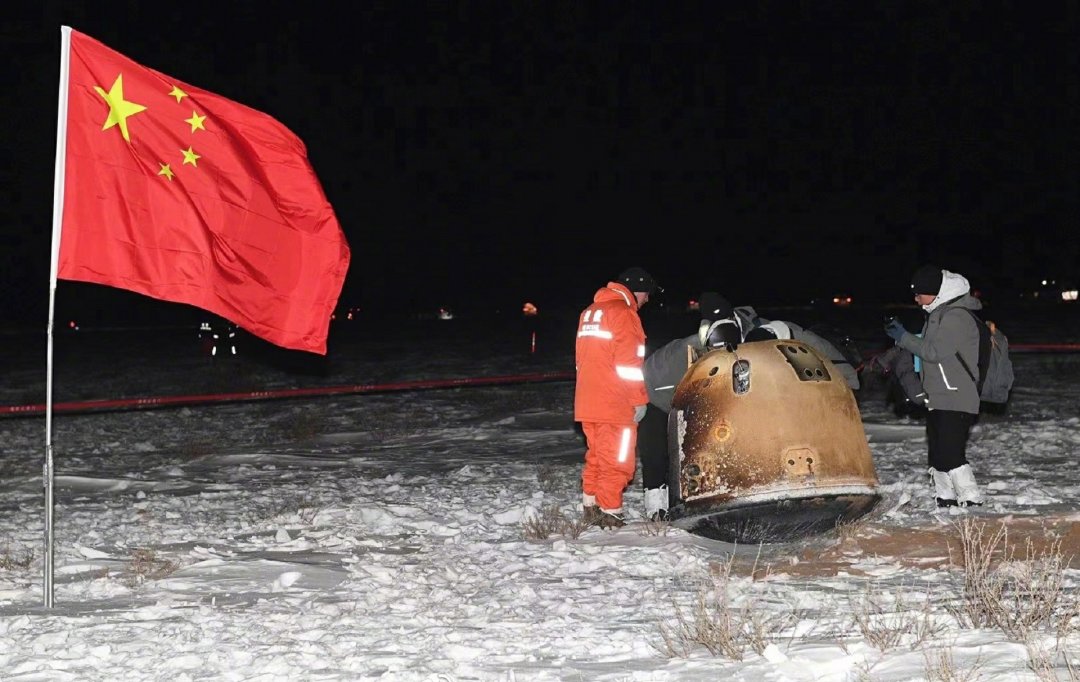American researchers revealed that a piece of a Chinese missile that collided with the surface of the moon in March 2022 was carrying an unconventional or secret payload.
The study, published in the Planetary Science Journal, identified this space debris as a component of the Chang’e-5 T-1 experimental spacecraft.
Launched in October 2014 from the Xichang Satellite Launch Center in southwest China, the rocket’s upper stage left a distinctive double crater on the moon’s surface indicating the presence of additional, undetected payload, according to the study.
Tanner Campbell, first author of the study and a doctoral student at the University of Arizona, Highlight Anomalies in the behavior of the missile. Normally, one would expect the rocket body to exhibit some oscillation due to its asymmetric structure.
However, the observed tumbling motion was described as “end-to-end” and remarkably stable. Campbell explained that this stability indicates the presence of a large mass on the upper end of the rocket booster.

This mass balances the heavy engines below, which weigh about 544 kg (1,200 lb) without fuel. Although the two known tools on the booster weigh only about 27 kg, the researchers noted the unusual symmetry of the resulting double crater.
Drawing a comparison with the Apollo missions, which intentionally directed rocket debris to the Moon for research, Campbell noted that such missions produced either round or rectangular depressions, and never a double crater of equal size.
Campbell acknowledged the inherent uncertainty surrounding the mysterious payload, raising a range of possible explanations, ranging from additional support structures to supplementary hardware or the inclusion of completely unknown items.
However, he acknowledged that revealing the exact nature of this payload may remain a permanent mystery.
These discoveries shed light on the complex dynamics of space debris and open new horizons for detecting the remains of space missions imprinted on celestial bodies. The report also emphasizes the importance of active monitoring of obsolete space hardware.
Chinese Chang’e-5 T-1 mission
The Chang’e-5 T-1 mission, designed as a precursor to the more famous Chang’e-5 mission of 2020 that successfully returned lunar samples to Earth, was launched in 2014.
Five months after launching this preparatory mission, astronomers identified an unattributed piece of space debris called WE0913A in 2015.
This heavenly being, first discoverer The moon, which was conducted by astronomers at the Catalina Sky Survey Project, entered the spotlight in January 2022, when American space debris tracker Bill Gray predicted it would collide with the far side of the moon within months.
It was initially thought to be the second stage of Elon Musk’s Falcon 9 rocket from Elon Musk’s SpaceX, but subsequent observations and analysis of orbital data indicated a connection to the Chinese Chang’e 5-T1 rocket.
On the other hand, Chinese officials questioned this connection and claimed that the missile disintegrated in the Earth’s atmosphere years ago.

Meanwhile, images taken by NASA’s Lunar Reconnaissance Orbiter (LRO) also revealed an unexpected development at the crash site: not just one but two overlapping craters in the Hertzsprung Crater on the far side of the Moon.
This phenomenon raised eyebrows, as according to Arizona State University, at least 47 NASA rocket objects have previously collided with the Moon, yet none of them produced a double crater.
NASA in June 2022 I confess The unexpected nature of this double hole, paves the way for increased curiosity. To unravel the mystery surrounding WE0913A, researchers examined its behavior during flight and the characteristics of the craters it left behind.
By closely examining how sunlight reflects off the debris as it falls through space, and by comparing these observations with simulations, the researchers identified a remarkable similarity to the Chang’e 5-T1 rocket.
“This is the first time we’ve seen a double hole,” Campbell said. “We know that in the case of Chang’e 5 T1, its impact was almost direct, and to get these two craters that are roughly the same size, you need two roughly equal masses that are far apart from each other.”
While WE0913A represents the first case of unintentional space debris colliding with the Moon, human-made satellites colliding with the Moon’s surface is not unprecedented.
In 2009, NASA intentionally rammed a 5,600 mph (9,000 km/h) lunar crater into the moon’s south pole.
This deliberate effect created a plume that made it easier for scientists to detect chemical signatures that indicate the presence of water ice. Additionally, as part of its disposal method, NASA pointed the Apollo program’s Saturn V rockets at the Moon.

“Beer aficionado. Gamer. Alcohol fanatic. Evil food trailblazer. Avid bacon maven.”

